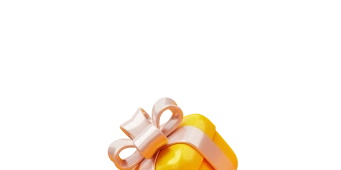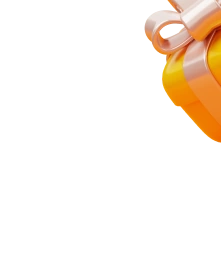Why Does My Male Dog Still Hump After Being Neutered?
Neutering is a common procedure performed on male dogs to prevent unwanted behaviors and health issues. It involves the removal of the testicles, which significantly reduces hormone levels and curbs certain sexual behaviors. However, some dog owners may notice that their male dogs continue to exhibit humping behavior even after being neutered. This puzzling phenomenon raises several questions: Why does this behavior persist? Is it normal? What can be done to address it? In this article, we will delve into the reasons behind post-neutering humping and explore practical recommendations to manage and discourage this behavior.
Humping Behavior in Neutered Male Dogs:
Humping, also known as mounting or sexual mounting, is a natural behavior in dogs that can have various motivations. It is important to understand that humping is not solely a sexual behavior, but can also be triggered by excitement, stress, dominance, or even playfulness. Neutering significantly reduces the production of testosterone, the hormone responsible for driving sexual behaviors in male dogs. Consequently, neutering often leads to a decrease in humping behavior. However, it is not a guaranteed solution to eliminate humping entirely.
Possible Reasons for Continued Humping:
1. Learned Behavior: Dogs may develop a habit of humping due to prior experiences or reinforcement. If a dog has been allowed to hump in certain situations, even after being neutered, they may continue the behavior as a learned response.
2. Social Interaction: Humping can also be a form of social interaction among dogs. It can serve as a way to establish dominance, exert control, or simply engage in play. Neutering may not fully eliminate this aspect of humping, especially if it is driven by social dynamics.
3. Medical Conditions: In some cases, persistent humping after neutering may be linked to underlying medical conditions. Hormonal imbalances, urinary tract infections, or skin irritations can contribute to increased humping behavior. Consulting a veterinarian is crucial to rule out any potential health issues.
Managing Post-Neutering Humping:
While it may not be possible to completely eradicate humping behavior in neutered male dogs, there are several practical recommendations to manage and discourage this behavior:
1. Consistent Training: Reinforce basic obedience commands such as “sit,” “stay,” and “leave it.” By redirecting your dog’s attention and providing alternative commands, you can interrupt and redirect humping behavior.
2. Environmental Management: Create a safe and stimulating environment for your dog. Provide engaging toys, regular exercise, and mental stimulation to help alleviate any excess energy that may contribute to humping.
3. Positive Reinforcement: Reward your dog for appropriate behavior and discourage humping by redirecting their attention and providing praise or treats when they engage in desired activities.
4. Consult a Professional: If humping behavior persists or becomes problematic, seeking guidance from a professional dog trainer or behaviorist can be beneficial. They can assess the situation, identify underlying triggers, and provide tailored strategies to address the behavior effectively.

Why Does My Male Dog Still Hump After Being Neutered
While neutering is generally effective in reducing humping behavior in male dogs, it does not guarantee complete elimination. Post-neutering humping can have various causes, including learned behavior, social interaction, or underlying medical conditions. By understanding these factors and implementing consistent training, environmental management, positive reinforcement, and seeking professional guidance when needed, dog owners can effectively manage and discourage humping behavior in their neutered male dogs. Remember, patience, consistency, and a proactive approach are key in addressing this common canine behavior.
Understanding the Persistence of Humping Behavior in Neutered Male Dogs
Factors Influencing Post-Neutering Humping
While neutering is generally effective in reducing humping behavior in male dogs, there are several factors that can contribute to its persistence even after the procedure. Understanding these factors can shed light on why some neutered male dogs continue to exhibit humping behavior.
Learned Behavior and Reinforcement
One key factor is learned behavior and reinforcement. Dogs are highly trainable and can develop habits based on past experiences. If a neutered male dog has been allowed to hump in certain situations, whether during play or as a response to excitement, it can become a learned behavior. In such cases, the dog may continue humping even after neutering due to the association between the behavior and the positive reinforcement received in the past.
Social Interaction and Communication
Humping behavior in dogs is not solely driven by sexual motivations. It can also serve as a form of social interaction and communication. Dogs may mount or hump to establish dominance, exert control, or engage in play with other dogs. Neutering reduces testosterone levels and can diminish the sexual aspect of humping, but it may not eliminate the behavior entirely if it is driven by social dynamics. Neutered male dogs may still engage in humping as a means of communication or to assert their dominance in certain situations.
Underlying Medical Conditions
In some cases, persistent humping after neutering may be linked to underlying medical conditions. Hormonal imbalances, such as an overproduction of adrenal hormones, can influence a dog’s behavior and contribute to increased humping. Additionally, urinary tract infections or skin irritations can cause discomfort, leading to heightened humping behavior. If a neutered male dog continues to hump excessively or exhibits other concerning symptoms, it is important to consult a veterinarian to rule out any potential medical issues.
Practical Recommendations to Manage Post-Neutering Humping
While complete elimination of humping behavior may not be achievable, there are practical recommendations that can help manage and discourage humping in neutered male dogs.
Consistent Training and Redirection
Consistent training is crucial in managing humping behavior. Reinforce basic obedience commands such as “sit,” “stay,” and “leave it.” By redirecting your dog’s attention and providing alternative commands, you can interrupt and redirect humping behavior. Consistency is key, and it may take time for your dog to learn and respond to the redirection consistently.
Environmental Management and Stimulation
Creating a stimulating and enriching environment for your neutered male dog can help alleviate excess energy that may contribute to humping. Provide engaging toys, regular exercise, and mental stimulation to keep your dog mentally and physically satisfied. A tired and mentally stimulated dog is less likely to engage in humping behavior.
Positive Reinforcement and Distraction
Positive reinforcement plays a vital role in discouraging humping behavior. Reward your dog for appropriate behavior and redirect their attention when they start to exhibit humping tendencies. Use toys, treats, or engaging activities to distract your dog and redirect their focus onto more desirable behaviors.
Seeking Professional Guidance
If humping behavior persists or becomes problematic, seeking guidance from a professional dog trainer or behaviorist can be beneficial. They can assess the situation, identify underlying triggers, and provide tailored strategies to address the behavior effectively. A professional can also help determine if there are any additional factors contributing to the humping behavior that may require specialized intervention.
Conclusion
In conclusion, understanding the reasons behind why male dogs continue to hump even after being neutered can be crucial for pet owners seeking to manage this behavior effectively. For a deeper dive into this topic, you can visit geepets.com, where a comprehensive guide on canine behavior post-neutering awaits.
Additionally, for further insights and expert advice on managing your dog’s post-neuter behavior, the American Kennel Club (AKC) offers valuable resources at akc.org. Here, you can find a wealth of information on dog behavior, training tips, and health advice to ensure your furry friend remains happy and well-adjusted.

Why Does My Male Dog Still Hump After Being Neutered
Practical Recommendations to Address Post-Neutering Humping
1. Consistent Training and Redirection
Consistent training is essential in managing humping behavior in neutered male dogs. Teach and reinforce basic obedience commands such as “sit,” “stay,” and “leave it.” When you notice your dog starting to exhibit humping behavior, calmly redirect their attention to an alternative command or activity. Consistency and patience are key, as it may take time for your dog to learn and respond to redirection consistently.
2. Environmental Management and Stimulation
Creating a stimulating and enriching environment for your dog can help reduce humping tendencies. Provide plenty of physical exercise through daily walks, play sessions, or interactive toys. Mental stimulation is equally important, so engage your dog in puzzle toys, obedience training, or scent games. A well-exercised and mentally stimulated dog is less likely to engage in excessive humping.
3. Positive Reinforcement and Distraction
Positive reinforcement is a powerful tool in discouraging humping behavior, a common query that might come to mind is, “Why does my male dog still hump after being neutered?” Understanding that even after neutering, some dogs may continue this behavior due to habits or excitement can guide your response. Whenever your dog displays appropriate behavior, such as sitting calmly or engaging in play without humping, reward them with praise, treats, or their favorite toy, reinforcing that not engaging in humping is the desired behavior. This approach directly addresses the concern, “Why does my male dog still hump after being neutered?” by promoting alternative actions.
Additionally, if you observe your dog starting to hump, which might make you wonder, “Why does my male dog still hump after being neutered?” it’s crucial to redirect their attention to a more suitable activity or command. Use toys, treats, or engaging activities to distract them and redirect their focus away from humping. This strategy not only helps manage the behavior but also provides a constructive outlet for their energy, further addressing the issue of, “Why does my male dog still hump after being neutered?” By consistently applying these techniques, you can minimize humping behavior, even if the question, “Why does my male dog still hump after being neutered?” remains a part of your dog’s complex behaviors.
4. Neutering at an Appropriate Age
Timing is crucial when it comes to neutering. Consult with your veterinarian to determine the optimal age for neutering your male dog. Neutering at a younger age, typically before sexual maturity, may help prevent the development of humping behavior. Early neutering can minimize the influence of hormones on sexual behaviors, including humping.
5. Consultation with a Professional
If humping behavior persists or becomes problematic despite your efforts, and you find yourself constantly wondering, “Why does my male dog still hump after being neutered?” it might be time to consider seeking guidance from a professional dog trainer or behaviorist. They can assess the situation, identify any underlying triggers or issues related to your question, “Why does my male dog still hump after being neutered?” and provide tailored strategies to address the behavior effectively.
A professional can offer valuable insights and techniques specific to your dog’s needs, helping you manage and discourage humping behavior more successfully. Their expertise can be particularly useful if you’re puzzled by the recurring thought, “Why does my male dog still hump after being neutered?” as they can explain that humping can be due to reasons other than sexual impulses, such as dominance, excitement, or stress.

Why Does My Male Dog Still Hump After Being Neutered
6. Medical Evaluation
If your neutered male dog continues to exhibit excessive humping or displays other concerning symptoms, it’s important to ask, “Why Does My Male Dog Still Hump After Being Neutered?” Consulting with a veterinarian can provide answers to “Why Does My Male Dog Still Hump After Being Neutered” by performing a thorough medical evaluation to rule out any underlying health conditions that may be contributing to the behavior.
When pondering, “Why Does My Male Dog Still Hump After Being Neutered,” it’s crucial to consider that hormonal imbalances, urinary tract infections, or skin irritations can all potentially influence humping behavior. Therefore, addressing any medical issues is crucial for effective management of “Why Does My Male Dog Still Hump After Being Neutered.” This approach ensures that every possible factor related to the question, “Why Does My Male Dog Still Hump After Being Neutered,” is thoroughly examined, leading to appropriate interventions and support for your pet.
7. Spaying Female Dogs
If you have a neutered male dog that persistently humps, consider spaying any female dogs in the household. Female dogs in heat can emit pheromones that may trigger humping behavior in neutered males. Spaying female dogs can help reduce the presence of these pheromones and potentially decrease humping tendencies.
Remember, each dog is unique, and it may take time to find the most effective combination of strategies for managing humping behavior. Be patient, consistent, and proactive in implementing these recommendations, and always prioritize the well-being and comfort of your beloved pet.






















